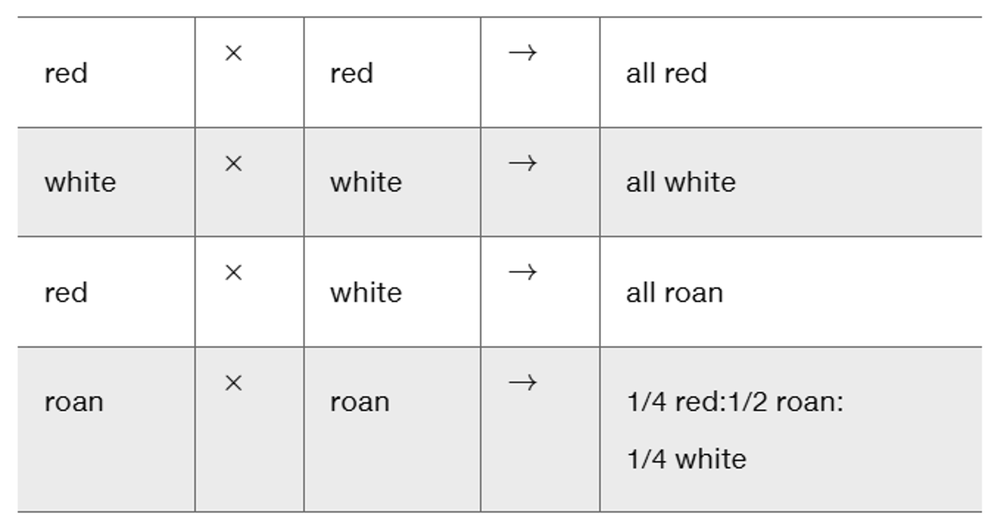 Back
BackProblem 1a
How were early geneticists able to ascertain inheritance patterns that did not fit typical Mendelian ratios?
Problem 1b
In the discussion, we focused on extensions and modifications of Mendelian principles and ratios. In the process, we encountered many opportunities to consider how this information was acquired. On the basis of these discussions, what answers would you propose to the following fundamental questions?
How did geneticists determine that inheritance of some phenotypic characteristics involves the interactions of two or more gene pairs? How were they able to determine how many gene pairs were involved?
Problem 1c
The discussion centers on extensions and modifications of Mendelian principles and ratios. In the process, we encountered many opportunities to consider how this information was acquired. On the basis of these discussions, what answers would you propose to the following fundamental questions?
How do we know that specific genes are located on the sex-determining chromosomes rather than on autosomes?
Problem 1d
The discussion centers on extensions and modifications of Mendelian principles and ratios. In the process, we encountered many opportunities to consider how this information was acquired. On the basis of these discussions, what answers would you propose to the following fundamental questions?
For genes whose expression seems to be tied to the sex of individuals, how do we know whether a gene is X-linked in contrast to exhibiting sex-limited or sex-influenced inheritance?
- Write a short essay that explains why multiple and lethal alleles often result in a modification of the classic Mendelian monohybrid and dihybrid ratios.
Problem 2
Problem 3
In shorthorn cattle, coat color may be red, white, or roan. Roan is an intermediate phenotype expressed as a mixture of red and white hairs. The following data were obtained from various crosses:
How is coat color inherited? What are the genotypes of parents and offspring for each cross?
Problem 4
In foxes, two alleles of a single gene, P and p, may result in lethality (PP), platinum coat (Pp), or silver coat (pp). What ratio is obtained when platinum foxes are interbred? Is the P allele behaving dominantly or recessively in causing (a) lethality; (b) platinum coat color?
- In mice, a short-tailed mutant was discovered. When it was crossed to a normal long-tailed mouse, 4 offspring were short-tailed and 3 were long-tailed. Two short-tailed mice from the F1 generation were selected and crossed. They produced 6 short-tailed and 3 long-tailed mice. These genetic experiments were repeated three times with approximately the same results. What genetic ratios are illustrated? Hypothesize the mode of inheritance and diagram the crosses.
Problem 5
- List all possible genotypes for the A, B, AB, and O phenotypes. Is the mode of inheritance of the ABO blood types representative of dominance, recessiveness, or codominance?
Problem 6
Problem 7
With regard to the ABO blood types in humans, determine the genotype of the male parent and female parent shown here:
Male parent: Blood type B; mother type O
Female parent: Blood type A; father type B
Predict the blood types of the offspring that this couple may have and the expected proportion of each.
- In a disputed parentage case, the child is blood type O, while the mother is blood type A. What blood type would exclude a male from being the father? Would the other blood types prove that a particular male was the father?
Problem 8
Problem 9a
The A and B antigens in humans may be found in water-soluble form in secretions, including saliva, of some individuals (Se/Se and Se/se) but not in others (se/se). The population thus contains 'secretors' and 'nonsecretors.'
Determine the proportion of various phenotypes (blood type and ability to secrete) in matings between individuals that are blood type AB and type O, both of whom are Se/se.
Problem 9b
The A and B antigens in humans may be found in water-soluble form in secretions, including saliva, of some individuals (Se/Se and Se/se) but not in others (se/se). The population thus contains 'secretors' and 'nonsecretors.'
How will the results of such matings change if both parents are heterozygous for the gene controlling the synthesis of the H substance (Hh)?
Problem 10
In chickens, a condition referred to as 'creeper' exists whereby the bird has very short legs and wings and appears to be creeping when it walks. If creepers are bred to normal chickens, one-half of the offspring are normal and one-half are creepers. Creepers never breed true. If bred together, they yield two-thirds creepers and one-third normal. Propose an explanation for the inheritance of this condition.

